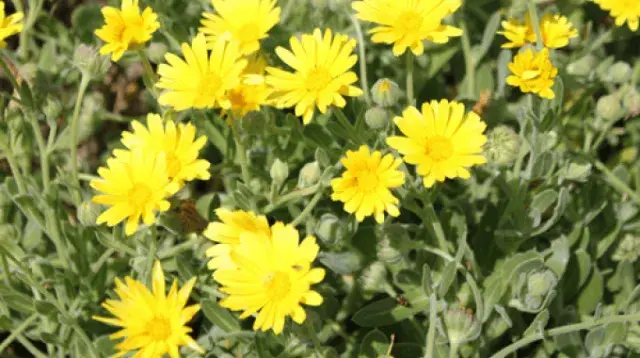Saving the sea marigold, an andangered flower
The sea marigold was on the brink of disappearing
Threatened by humans, but also… by nature
The sea marigold, endemic to Sicily, is a beautiful plant with bright yellow flowers that could still be found in large numbers in the western part of the island (Trapani) just a few years ago.
But the flower has three powerful enemies that nearly led to its downfall:
- pollution from cars, which are increasingly common on the island,
- the uncontrolled dumping of waste, a blight on its environment,
- and competition from an invasive exotic plant (Carpobrotus edulis).
The combination of these three factors nearly drove the plant to extinction. It is now on the red list of threatened species kept by the International Union for Conservation of Nature.

Calendula maritima Guss.
(Family: Asteraceae)
This yellow-flowered plant, which looks like a small daisy, is often found in areas near beaches, which are rich in nitrogen produced by decomposing seaweed. It helps recycle this nitrogen, thereby purifying the air.

The red list of threatened species
This is a worldwide inventory that indicates the state of conservation of animal and plant species. It is kept by the IUCN (International Union for Conservation of Nature) and serves as a key indicator for many entities involved in biodiversity conservation.
Coordinating actions to save it
Klorane Botanical Foundation has committed to an ambitious program with various partners to save the sea marigold , which is critically endangered.
We work with the IUCN (International Union for Conservation of Nature), the National Botanical Conservatory of Brest and local organizations: the National Research Council, the University of Palermo and the provincial authorities.
The program is composed of three missions and involves both experts and the general public.

With other experts
We have focused on complementary research and rehabilitation actions:
- A study of the populations in their environments: phytosociological and demographic studies, scientific monitoring...
- The collection of seeds from protected sites in order to study them.
- The preservation of existing sea marigold populations through ecological and landscape rehabilitation in the form of micro-reserves.
- The propagation of the species in botanical gardens to strengthen the existing populations.
With schools
Why not get children involved in our initiatives?
Pedagogy is a key element in our approach to biodiversity protection!
To enhance the initiative's impact, we have included schools and the general public in the process.

For the schools selected, the program includes:
- Visits by a botanist to explain the importance of biodiversity and the threat of extinction faced by the sea marigold.
- Site clean-up activities.
- The growing of seedlings in the classroom which are then reintroduced to their natural environment.



